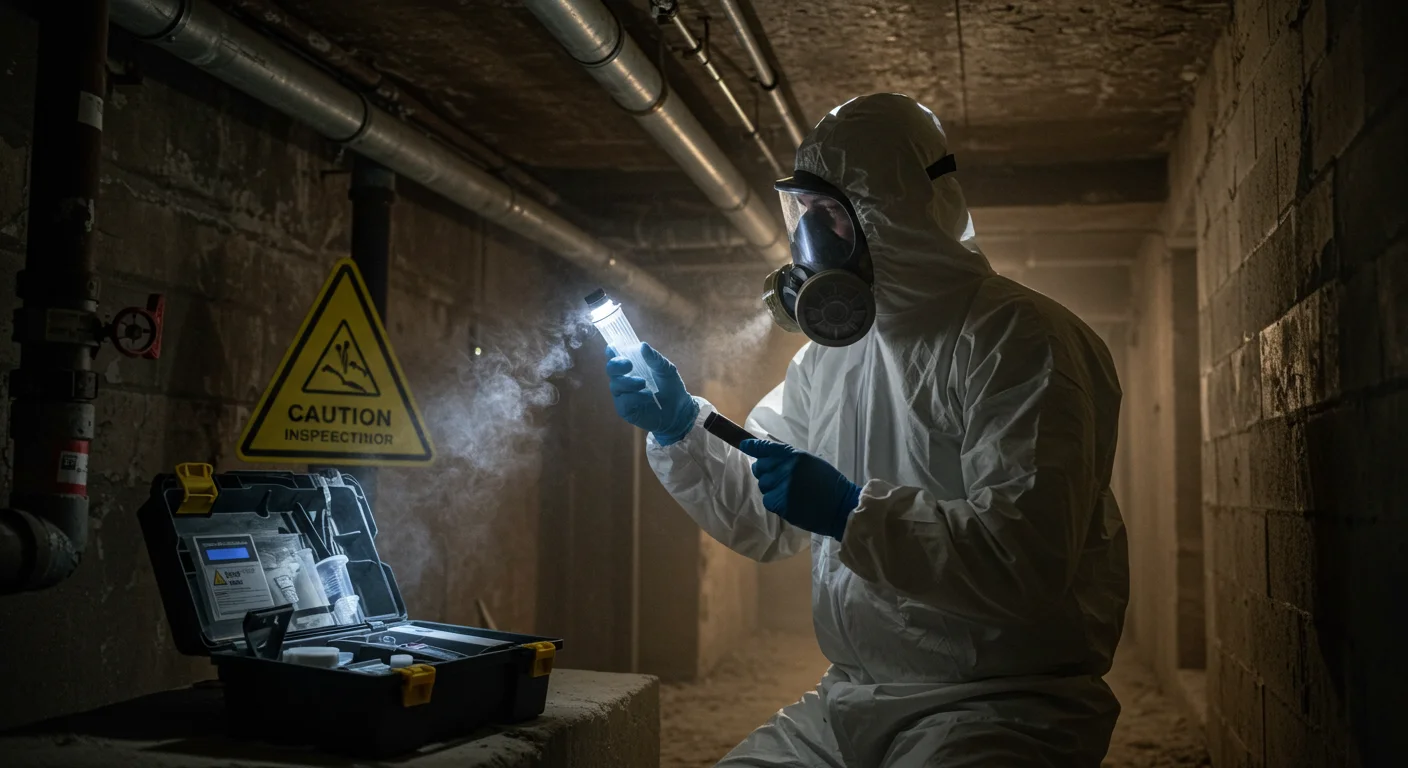When it comes to hidden dangers in older buildings, asbestlint is one of the most misunderstood terms. While asbestos itself has been widely researched, “asbestlint” is often used to describe asbestos-containing lint, tape, or fibrous insulation materials that were once common in homes and commercial structures. This article explores what asbestlint is, why it’s dangerous, how to recognize it, and the safest ways to manage or remove it.
We’ll cover its history, usage, health impacts, and modern solutions in detail. If you’re a homeowner, landlord, or simply someone living in a building that predates the 1980s, this guide will help you understand the unseen risks and equip you with practical knowledge to deal with asbestlint responsibly.
1. What is Asbestlint?
“Asbestlint” is not a term you’ll find in scientific journals, but it has become a popular way of referring to asbestos-containing lint, tape, or insulation fibers. It is most often associated with:
- Pipe insulation tape used for sealing joints.
- Fireproofing wraps around ducts and heating systems.
- Dust-like fibrous debris from deteriorating asbestos products.
- Ceiling, wall, or flooring remnants where asbestos fibers become loose and resemble lint.
The name captures its visual resemblance to “lint” — fibrous, dusty, and easy to spread. In reality, it’s just another form of asbestos-containing material (ACM), but one that often goes unnoticed because it blends with ordinary household dust.
2. Historical Use of Asbestlint in Construction
To appreciate why asbestlint remains a problem, it’s important to understand its past. Between the 1940s and late 1970s, asbestos was hailed as a “miracle mineral.” It was:
- Heat-resistant: Perfect for insulation around hot water pipes and furnaces.
- Durable: Strengthened building materials like cement and plaster.
- Fireproof: Used in roofing shingles, floor tiles, and wall panels.
- Cheap: Widely available, making it the material of choice for contractors.
Asbestlint-like products were common in:
- Schools
- Hospitals
- Apartment complexes
- Industrial plants
- Government buildings
Unfortunately, what was once considered safe is now recognized as one of the most hazardous building materials ever used.
3. Why Asbestlint is Dangerous
The real threat of asbestlint lies in fiber release. When disturbed, asbestos fibers break into microscopic strands that can float in the air for hours. Inhalation is the primary exposure route, and the body cannot break down or expel these fibers easily.
Health risks include:
- Asbestosis – A chronic lung disease caused by scarring of lung tissue.
- Mesothelioma – A rare and aggressive cancer linked exclusively to asbestos exposure.
- Lung cancer – Particularly dangerous when combined with smoking.
- Pleural plaques – Thickened areas of the lung lining.
The latency period is long — symptoms often appear 20–40 years after exposure. That means a building that still contains asbestlint today could silently be setting up health problems decades later.
4. How to Identify Asbestlint
Visual Clues
- Color: Grayish-white, off-white, or dusty fibers.
- Texture: Fluffy, fibrous, or cloth-like tape around joints.
- Condition: Crumbling, damaged, or powdery materials in older homes.
Common Locations
- Pipe insulation in basements.
- Heating ducts in attics.
- Old vinyl floor tiles or the adhesive underneath.
- Popcorn ceilings and textured wall paints.
- Boiler rooms or furnace insulation.
Professional Testing
While clues can point toward possible asbestos presence, the only way to be sure is laboratory testing. Certified inspectors collect samples and analyze them under polarized light microscopy (PLM) or electron microscopy.
DIY testing is discouraged, as mishandling samples can increase exposure.
5. Regulations Around Asbestlint
Globally, asbestos has faced bans and strict regulation, though not uniformly.
- United States: Asbestos is heavily restricted but not completely banned. OSHA and EPA regulate its handling.
- European Union: Complete bans in construction and trade since the early 2000s.
- Australia: Comprehensive ban since 2003.
- Developing countries: Regulations are inconsistent, meaning older buildings may still contain asbestlint-like materials.
These rules are designed not just to protect workers but also homeowners and tenants who could unknowingly be exposed.
6. Safe Handling and Management
Encapsulation
Instead of removing, professionals sometimes seal asbestos in place with a protective coating. This reduces the risk of fiber release.
Enclosure
Building a barrier around the asbestos-containing area — for example, enclosing pipes with a non-asbestos sleeve.
Removal
The riskiest option if not done correctly. It involves specialized equipment:
- HEPA vacuums
- Negative pressure units
- Full-body protective suits and respirators
Disposal is also strictly regulated — asbestos waste must be sealed in labeled containers and delivered to approved disposal sites.
7. Modern Alternatives to Asbestlint
Thankfully, asbestos is no longer the go-to material for insulation and fireproofing. Safer alternatives include:
- Fiberglass insulation
- Mineral wool
- Cellulose fibers
- Ceramic insulation
- Foam-based sealants
These replacements offer durability and fire resistance without the health risks.
8. Signs You May Have Asbestlint at Home
Here are a few red flags homeowners should look out for:
- Your building was built before 1980.
- Pipes wrapped with cloth-like material in the basement or boiler room.
- Crumbling ceiling tiles or popcorn ceilings that shed dust.
- Unexplained lint-like dust in areas near insulation or heating systems.
If you notice these, avoid disturbing the material and contact an asbestos professional.
9. Case Studies of Asbestlint Exposure
- School Renovations (US, 1990s): A school discovered asbestos tape (asbestlint) around pipes during renovations. Improper removal led to contamination of multiple classrooms, forcing a costly cleanup.
- Homeowner DIY Project: A family renovating a 1960s home in the UK unknowingly drilled into asbestos-backed floor tiles. Years later, two members developed respiratory issues traced to the exposure.
- Industrial Plant: Workers exposed daily to asbestos insulation tape developed mesothelioma decades later, highlighting the long-term dangers of asbestlint.
10. Preventive Measures for Homeowners
- Never sand, drill, or cut materials you suspect contain asbestos.
- Seal off areas before professional inspection.
- Use certified contractors for renovation in older buildings.
- Educate tenants about not disturbing insulation or suspicious materials.
Prevention is far more cost-effective — and safer — than remediation after exposure.
11. Future Outlook: Managing the Legacy of Asbestlint
While asbestos is banned in many countries, millions of buildings worldwide still contain asbestlint-like materials. The challenge now is managing this legacy safely.
- Public awareness is key. Many people don’t know asbestos is present until it’s too late.
- Technological advances in detection (like portable fiber analyzers) will make inspections easier.
- Stronger enforcement of regulations ensures safer removal and disposal practices.
The legacy of asbestlint will be with us for decades, but proactive action today can minimize future health crises.
Conclusion
Asbestlint may not be a scientific term, but it represents a very real danger — the lingering presence of asbestos-containing fibers in our homes and buildings. From insulation tape to crumbling ceiling tiles, asbestlint is a silent hazard that demands awareness and caution.
The good news is that we now have knowledge, regulations, and safer alternatives. The responsibility lies with homeowners, contractors, and governments to handle it properly. Whether through encapsulation, enclosure, or professional removal, the goal is the same: protect health today to prevent tragedy tomorrow.
FAQs
Q1. Is asbestlint the same as asbestos?
Not exactly. Asbestlint is a term used to describe asbestos-containing lint, tape, or fibrous debris, but it is still asbestos in form and risk.
Q2. Can I identify asbestlint just by looking at it?
Visual clues may help, but only laboratory testing can confirm asbestos presence with certainty.
Q3. Is all old insulation dangerous?
Not all, but any insulation from before the 1980s has a higher chance of containing asbestos.
Q4. Can I remove asbestlint myself?
DIY removal is highly discouraged due to fiber release risks. Always use certified asbestos professionals.
Q5. What should I do if I suspect asbestlint in my home?
Avoid disturbing it and contact a licensed inspector for safe testing and management.

